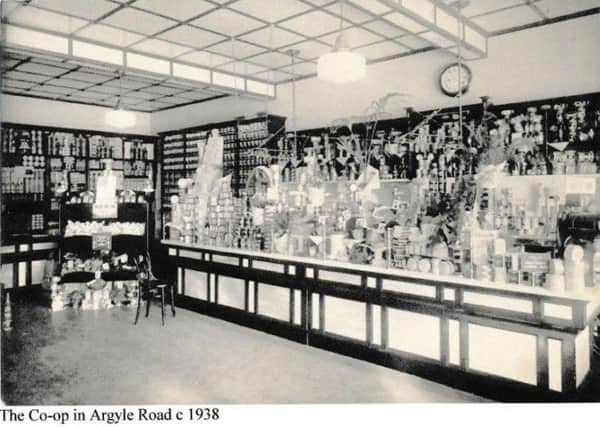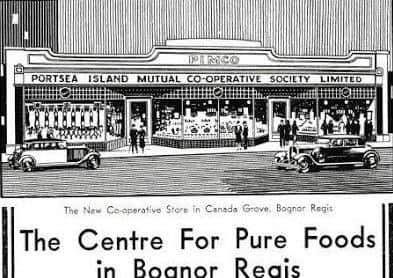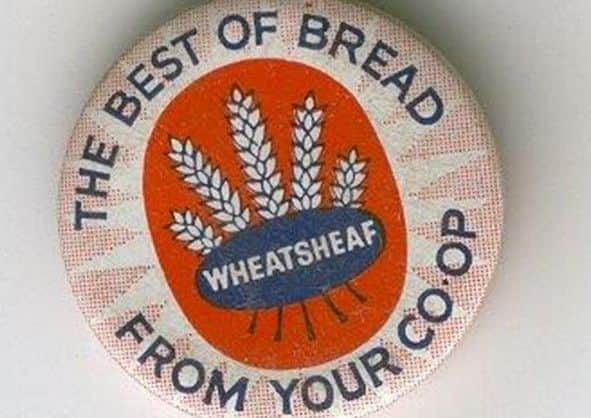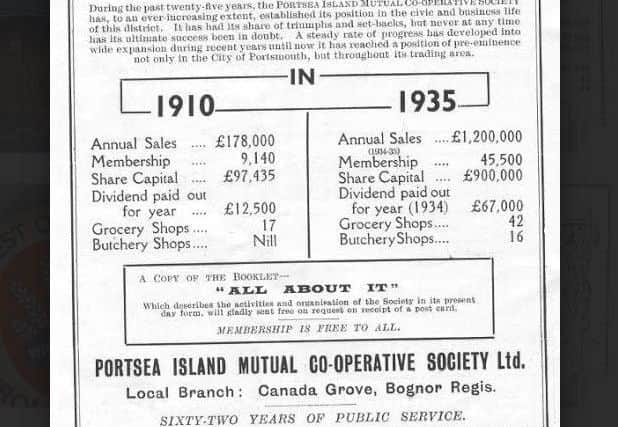Can you remember your Co-op dividend number?


How many people can remember their Co-op dividend number or that of their parents? My parents’ number was 11188.
This was a number unique to you and one which allowed you to collect your dividend, I think, annually.
Advertisement
Hide AdAdvertisement
Hide AdAs part of the Co-operative Society’s policy of profit sharing, a dividend of 1s 8d (8p) in the £ was paid to those who joined.


For a number of years the dividend could be collected from the church hall in Sudley Road, at the rear of St John’s church, today the site of Boots and WH Smith.
Later stamps were given, in the same way as the old Green Shield stamps, and these were redeemable in the stores.
No store cards to remember, just your number when asked in the shop – certainly less to carry around and much safer.
Advertisement
Hide AdAdvertisement
Hide AdThis week therefore I thought I could take a look at an organisation that is a national institution.


The first Co-operative was registered in 1863 in Rochdale and this group was eventually 300 Co-ops, predominantly in Lancashire and Yorkshire.
Did you know that the Co-operative Society was established in 1873 in Portsmouth?
The expansion of the local Co-operative to Chichester and beyond was due to suburban expansion. Do you know how many sites there have been in the town over the years and their locations today?
Advertisement
Hide AdAdvertisement
Hide AdFor many years the Co-op milk depot was situated in Ockley Road, where today we have a carwash facility.


When I was living in Gainsboro Road in the 1970s, it was very handy just to nip around the corner to get your milk and fresh Devonshire cream for any special occasion, or the unexpected visitor.
Eventually this service was moved to Chichester, the local yard closed and the buildings were demolished.
The first shop opened in the town during 1933 and it was known as Pimco – Portsea Island Mutual Co-operative Society.
Advertisement
Hide AdAdvertisement
Hide AdThis store was located in Canada Grove, apparently facing the Pavilion Gardens, as their point of reference; then for 35 years it was the Aladdin’s Cave, now a European supermarket.
The Co-op advertising at this time included mention of just one of their services, that of ‘the collection and delivery of orders free to all parts of the district’, also, apparently it was necessary to mention that ‘full dividend was given’ even for orders delivered.
During the Second World War, their advertising remarked that you could ‘enjoy your holiday’ with the phrase, ‘let the Co-operative take care of your emergency ration cards’.
By now the advertisement included their branches in North Bersted and Hawthorn Road.
Advertisement
Hide AdAdvertisement
Hide AdWith the growth in population by the 1950s, the Co-op business in the town was expanding and so they required larger premises.
To meet their needs they purchased two sites in the High Street.
One site was at No 62 which was a two-storey building and between the old bus station and Cleeves on the corner, where today we have the National Westminster bank.
This site is thought to have been built around the 1820s and was occupied for a time by Wade’s the builder and after the second world war, by one of the town’s second-hand dealers, Mr Ashton.
Advertisement
Hide AdAdvertisement
Hide AdThis store in the High Street sold almost everything, similar to that which today we purchase in any of the out-of-town supermarkets. Their original store was demolished and a Co-op departmental store was constructed which opened in August 1957.
In addition they purchased another shop across the road at No 55, and this was their self-service food hall, which also opened in August 1957. Garforth’ next occupied the site, now a supermarket.
The food hall was on the ground floor and an upper floor was for staff rooms, as in 1958 they anticipated employing in the region of 40-55 people in these two stores, all of whom were to be recruited locally.
The Society secretary at the time, remarked that the ‘food hall would be self-serve – a trend that was only just beginning to make its presence felt.’
Advertisement
Hide AdAdvertisement
Hide AdThe first day of opening for the departmental store saw customers being enticed by opening offers, which included a range of goods such as white weather duffle coats for boys, from 35/ – (£1.75p) and long-sleeved men’s shirts at 15/– (75p). Axminster carpets were also available from 42/– (£2.10p).
Now take your mind back to those very popular uncut moquette studio couches that were all the rage for a princely sum of £28 9s 6d or 104 weekly payments of £2 9s 0d. I wonder if there are any still in a bedsit somewhere in the town?
They also sold a range of the somewhat new plastic items, including tables, cake dishes, flowerpot holders and even plastic waste paper bins at 3/- or 15p.
Eventually trade and tastes were to change. Out-of-town shopping was becoming more popular and the main store was beginning to struggle so changed to become known as ‘Co-op Homemaker.’
Advertisement
Hide AdAdvertisement
Hide AdHere items for the home were the order of the day and in one advertisement in 1983 you could purchase an Amstrad CTV, 14-inch portable for £169.95. Ultimately this store also closed and for a number of years was taken over by a company called Tracey’s which also sold furniture and household items.
During 1982, the Co-op advertised that as their organisation was 100 years old, they had mounted a search to find citizens who were 100 years old during the month of November.
These people or their families were asked to contact the society now known as the Caring Sharing Co-op.
When we entered the new millennium, the Co-op believed it was now a family of businesses, with activities ranging from food to finance, farms to funerals.
Advertisement
Hide AdAdvertisement
Hide AdAlso it has a large presence on the Internet, which is a far cry from its early beginnings of working to the local communities.
In Hawthorn Road its shop continued, trading while the main town centre shops were closing.
Without its main town-centre shops, the Co-op looked for other sites and with the closure of the Olby’s/Cover’s site in Hawthorn Road at the junction with Gravits Lane, the Co-op purchased the site and a new supermarket was given the go ahead in February 1993.
This was an 11,850sq ft store. So for a time there were two Co-op stores in one road and serving the needs of their locality.
Advertisement
Hide AdAdvertisement
Hide AdWithin recent months the smaller Co-op has now become a Spar shop, leaving the mini supermarket and other stores in the Rose Green area.
Their name has also been connected with the future of the Kings Beach Hotel in Pagham – time will tell.
Don’t miss out on all the latest breaking news where you live.
Here are four ways you can be sure you’ll be amongst the first to know what’s going on.
1) Make our website your homepage at www.chichester.co.uk/
Advertisement
Hide AdAdvertisement
Hide Ad2) Like our Facebook page at www.facebook.com/ChichesterObserver
3) Follow us on Twitter @Chiobserver
4) Register with us by clicking on ‘sign in’ (top right corner). You can then receive our daily newsletter AND add your point of view to stories that you read here.
And do share with your family and friends - so they don’t miss out!
The Chichester Observer - always the first with your local news.
Be part of it.